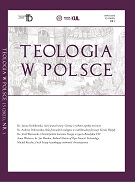Być może w naszym przekazie wiary zbyt często nie zauważamy istotowego związku między obu aspektami: fides qua i fides quae, koncentrując się w zależności od kontekstu czy sytuacji na jednym z nich. Istnieje wiele przesłanek, aby uznać za faktyczne, że tradycyjny przekaz wiary zbytnio skupił swoją uwagę na drugim elemencie, a mianowicie podając do wierzenia treści wiary w formie zwięzłych artykułów czy wypowiedzi katechizmowych, zakładał, że będą one w stanie wzbudzić w chrześcijanach jako odpowiedź akt osobowej wiary. Nie doceniono natomiast tego, co nazwalibyśmy źródłowym doświadczeniem wiary, które pochodzi bezpośrednio od osoby Ducha Świętego. Z drugiej strony można zaobserwować stanowisko odwrotne, sprowadzające wiarę do ujęcia fides qua. Coraz częściej bowiem wiarę definiuje się na zasadzie sądu intelektualnego, stwierdzającego, że Bóg istnieje, z pominięciem – objawionej przez Boga i podawanej przez Kościół – zawartości. W ten sposób powstaje coś, co można by określić „pozorem wiary”, sprowadzającej się ostatecznie – jako uwspółcześnionej postaci gnozy – do afirmacji własnych wyobrażeń o Bogu, czyli czegoś, co nie może zbawić człowieka.
PHENOMENOLOGY AND METAPHYSICS OF CHRISTIAN FAITH
Summary
This article presents the personal dimension of faith. In the Old Testament, faith is the secure trust in God’s promise and leadership with relation to the people of Israel. True faith is demonstrated in the form of personal responses (Abraham, Moses, the Prophets). In the New Testament, faith is a concept for the relationship between God and human beings on the basis of God’s saving activity for, in and through Jesus Christ. Faith is the personal, fundamental option in which a human being, through grace and trusting in God’s power, specifically in Jesus Christ, responds in consensus with the Church with his confession of the saving event of revelation. In contrast to its the colloquial meanings (belief as suppose, be of the well-founded conviction, agree with an authority, trust in something based on probability) faith in its personal meaning is an absolute assent based on the inner certainty. The author refers to the phenomenological studies of M. Scheler , who distinguishes between faith (der Glaube, fides qua) and belief (das Glauber, fides quae). Faith is the orientation, attitude on the real existence in the sphere of the absolute – there is burdened with a value sense. In absolute value, which is God, can be answered in the form of faith absolute (full-person). In metaphysical approach faith is shown as comprising the sphere of “seeing” and “hearing” – this integral approach protects it from making insulation to reason, to make it understands.
Ostatnia aktualizacja: 30.06.2014, godz. 15:14 - Natalia Haniewska































